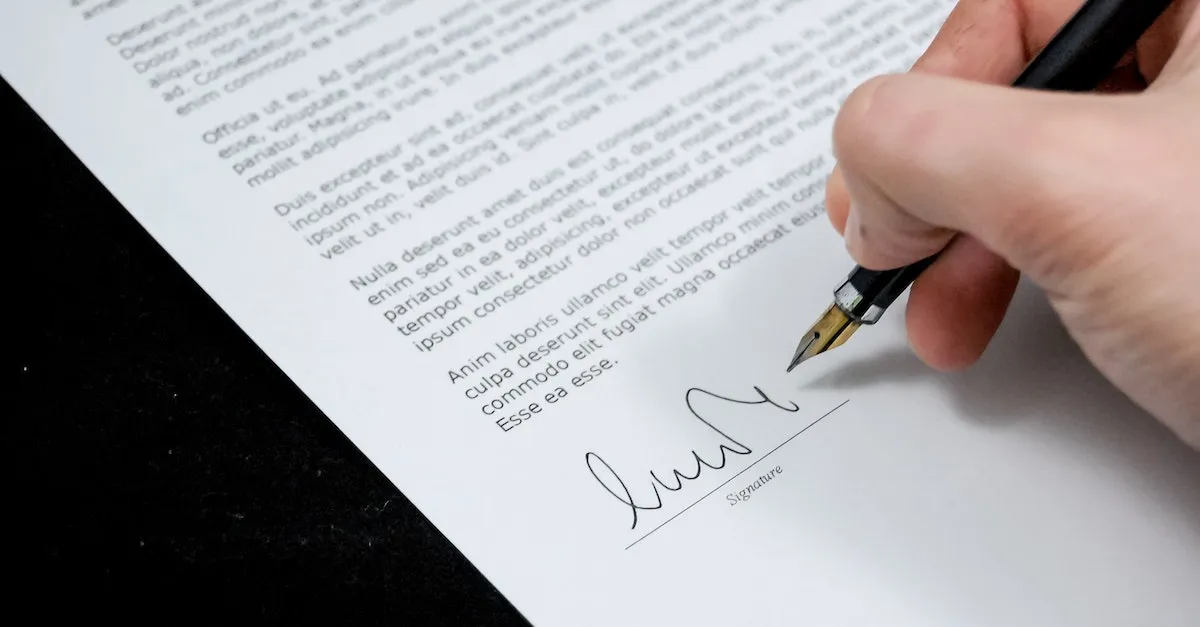What Does A Deed Look Like In California?
Buying a home is likely one of the biggest purchases you’ll ever make. When you close on a home, you’ll receive an important document called a deed. But what exactly is a deed and what does it look like in California?
If you’re short on time, here’s a quick answer to your question: A deed is a legal document that transfers ownership of real estate from the seller to the buyer. In California, deeds generally include information like the property address, buyer and seller names, sale price, legal description of the property, signatures, notary acknowledgement, and recording information once filed with the county recorder’s office.
In this comprehensive guide, we’ll cover everything you need to know about what a deed looks like in California, including:
The different types of deeds used in California real estate transactions
What information is included on a California deed
Where to find sample deed forms for California
How to record a deed in California
Why it’s important to review your deed carefully
The Most Common Types of Deeds Used in California Real Estate Transactions
When it comes to real estate transactions in California, various types of deeds are commonly used to transfer property ownership. Each type of deed has its own specific purpose and provides different levels of protection for the buyer. Here are the most common types of deeds used in California:
Grant Deed
The grant deed is the most commonly used deed in California real estate transactions. It is a legally binding document that transfers ownership of a property from the seller (grantor) to the buyer (grantee).
The grant deed guarantees that the grantor has the legal right to sell the property and that there are no undisclosed liens or encumbrances on the property. It also provides limited warranties to the grantee, ensuring that the grantor has not previously transferred the property to another party.
Quitclaim Deed
A quitclaim deed is another type of deed commonly used in California. Unlike a grant deed, a quitclaim deed does not provide any warranties or guarantees regarding the title of the property. Instead, it simply transfers the interest or claim that the grantor has in the property to the grantee.
Quitclaim deeds are often used in situations where there is a transfer of property between family members or in cases where there is uncertainty about the title.
Warranty Deed
A warranty deed is a deed that provides the highest level of protection for the buyer. It guarantees that the grantor has clear title to the property and will defend the buyer against any claims made by third parties.
Warranty deeds are less common in California compared to grant deeds, but they are still used in certain transactions where the buyer wants additional assurances regarding the property’s title.
Trust Deed/Deed of Trust
A trust deed, also known as a deed of trust, is a type of deed used in California when a property is financed through a mortgage loan. In a trust deed, the borrower (also known as the trustor) transfers the legal title to a trustee, who holds the property as security for the lender (beneficiary) until the loan is fully paid.
Once the loan is paid off, the trustee transfers the title back to the borrower. Trust deeds are commonly used in California real estate transactions involving mortgage financing.
It is important to note that while these are the most common types of deeds used in California, there may be other types of specialized deeds used in specific situations. If you are involved in a real estate transaction, it is always recommended to consult with a qualified real estate attorney or a licensed real estate professional to ensure that the appropriate type of deed is used.
What Information is Included on a California Deed
When it comes to understanding what a deed looks like in California, it’s important to know the key information that is included. A California deed is a legal document that transfers ownership of real property from one party to another.
Here are the main details you can expect to find on a California deed:
Names of the Grantor and Grantee
The deed will clearly state the names of both the grantor (the person or entity transferring the property) and the grantee (the person or entity receiving the property). This information is important for establishing who the parties involved are in the transaction.
Assessor’s Parcel Number
The assessor’s parcel number (APN) is a unique identifier assigned to each individual parcel of land in California. It helps to ensure accurate identification of the property being transferred and is commonly included on a California deed.
Legal Description of the Property
The deed will provide a legal description of the property being transferred. This description typically includes details such as the boundaries of the property, its dimensions, and any other specific identifying features.
Having a clear legal description helps to avoid any confusion or disputes regarding the property boundaries.
Sale Price and Tax Information
The sale price of the property is often included on the deed, providing transparency about the financial aspect of the transaction. Additionally, tax information related to the property, such as the assessed value and any outstanding taxes, may also be included.
Deed Restrictions or Covenants
Deed restrictions or covenants are conditions or limitations placed on the use of the property. These restrictions may include rules about what can be built on the property, how it can be used, and any other specific requirements.
The deed will outline these restrictions to ensure that the new property owner is aware of any limitations.
Signatures and Notary Acknowledgement
Finally, the deed will include the signatures of both the grantor and the grantee, indicating their agreement to the transfer of ownership. In some cases, a notary acknowledgement may also be included to certify that the signatures are authentic.
Understanding the information included on a California deed is essential for both buyers and sellers in real estate transactions. It helps to ensure a smooth and legally binding transfer of ownership. If you’d like to learn more about California deeds, you can visit the official website of the California Secretary of State at www.sos.ca.gov.
Where to Find Sample Deed Forms for California
When it comes to finding sample deed forms in California, there are several resources available to help you navigate the process. Whether you’re a homeowner, real estate professional, or simply curious about what a deed looks like in California, here are some places where you can find sample deed forms:
California Association of Realtors (CAR) Forms
The California Association of Realtors (CAR) is a reliable source for sample deed forms in California. They offer a wide range of forms that cover various types of real estate transactions, including deeds. These forms are regularly updated to ensure compliance with the latest laws and regulations.
You can access these forms through their website or by contacting your local realtor association.
County Recorder’s Office Forms
The County Recorder’s Office in each county of California is another place where you can find sample deed forms. These forms are specific to each county and may vary in format and content. You can visit the County Recorder’s Office in person or check their website for downloadable forms.
It’s important to note that while these forms are usually free, they may require notarization or other legal procedures.
Online Legal Forms
In today’s digital age, you can find almost anything online, and sample deed forms are no exception. There are numerous websites that offer free or paid access to sample deed forms for California. One popular website is LegalZoom.com.
They provide customizable deed forms that you can fill out online and download. It’s important to use reputable websites when accessing legal forms online to ensure accuracy and compliance with California laws.
How to Record a Deed in California
Recording a deed is an essential step in the homebuying process in California. It ensures that the transfer of ownership is properly documented and legally binding. If you’re unsure about how to record a deed in California, here are the steps you need to follow:
Get it Notarized
The first step in recording a deed in California is to get it notarized. This involves taking the deed to a notary public, who will verify your identity and witness your signature. Notarization is crucial as it adds an extra layer of authenticity to the document.
Make Copies
After notarizing the deed, make sure to make several copies of it. It’s always a good idea to have multiple copies on hand in case the original gets lost or damaged. Additionally, having copies makes it easier to distribute the deed to various parties involved in the transaction.
Record with the County
Next, you’ll need to record the deed with the county where the property is located. This is usually done at the county recorder’s office. By recording the deed, you create a public record of the transfer of ownership, providing evidence that you are now the legal owner of the property.
Document Recording Fees
When recording a deed in California, you’ll need to pay certain fees. These fees vary depending on the county and the type of transaction. It’s important to check with the county recorder’s office to determine the exact fees and payment methods accepted.
Keep in mind that these fees are typically non-refundable, so make sure you have the necessary funds before proceeding with the recording.
Recording a deed in California may seem like a daunting task, but by following these steps, you can ensure that the transfer of ownership is properly documented and legally binding. Remember, it’s always a good idea to consult with a real estate attorney or a professional title company to guide you through the process and answer any questions you may have.
Why It’s Important to Review Your Deed Carefully
When it comes to real estate transactions in California, one of the most crucial documents you need to understand and review carefully is the deed. A deed is a legal document that transfers ownership of a property from one party to another.
It is essential to review your deed thoroughly to ensure that all the necessary information is correct and that there are no errors or discrepancies that could potentially cause problems in the future.
Check for Errors
Before finalizing any real estate transaction, it is crucial to carefully examine the deed for any errors or mistakes. These errors could include misspelled names, incorrect addresses, or inaccurate property descriptions.
Even the smallest error can lead to significant issues down the line, so it’s important to catch and rectify them as soon as possible. If you identify any errors, consult with a real estate attorney or the appropriate authorities to have them corrected.
Verify all Parties Signed
Another vital aspect to consider when reviewing your deed is to ensure that all parties involved in the transaction have signed the document. This includes the seller, the buyer, and any other individuals or entities with an interest in the property.
By verifying that all necessary parties have signed the deed, you can avoid potential disputes or challenges to the validity of the transfer of ownership.
Confirm Legal Description is Correct
The legal description of the property is a crucial element of the deed. It accurately identifies the location and boundaries of the property being transferred. It is essential to review the legal description carefully and compare it with the property’s physical boundaries.
This will help ensure that there are no discrepancies or errors in the description, which could cause confusion or disputes in the future.
Review Covenants, Easements, Reservations
Lastly, it is important to thoroughly review the deed for any covenants, easements, or reservations that may affect the property. These are legal restrictions or obligations that may impact your rights as the property owner.
It is crucial to understand and be aware of any such restrictions before finalizing the transaction. If you come across any covenants, easements, or reservations that you do not understand or have concerns about, seek legal advice to clarify their implications.
Reviewing your deed carefully is essential to ensure a smooth real estate transaction and to protect your rights as a property owner in California. By following these steps and seeking professional advice when needed, you can avoid potential pitfalls and enjoy the peace of mind that comes with knowing your deed is accurate and in compliance with the law.
Conclusion
Receiving a deed is an exciting milestone as a new homeowner. While the deed itself looks straightforward, it contains important information that transfers legal ownership of the property to you. Be sure to review your California deed closely and keep it in a safe place with other important ownership documents.
Understanding what your deed looks like and what it means for your home ownership rights is key. With this guide, you now have a detailed overview of deeds in California real estate transactions. Congratulations on your new home!








